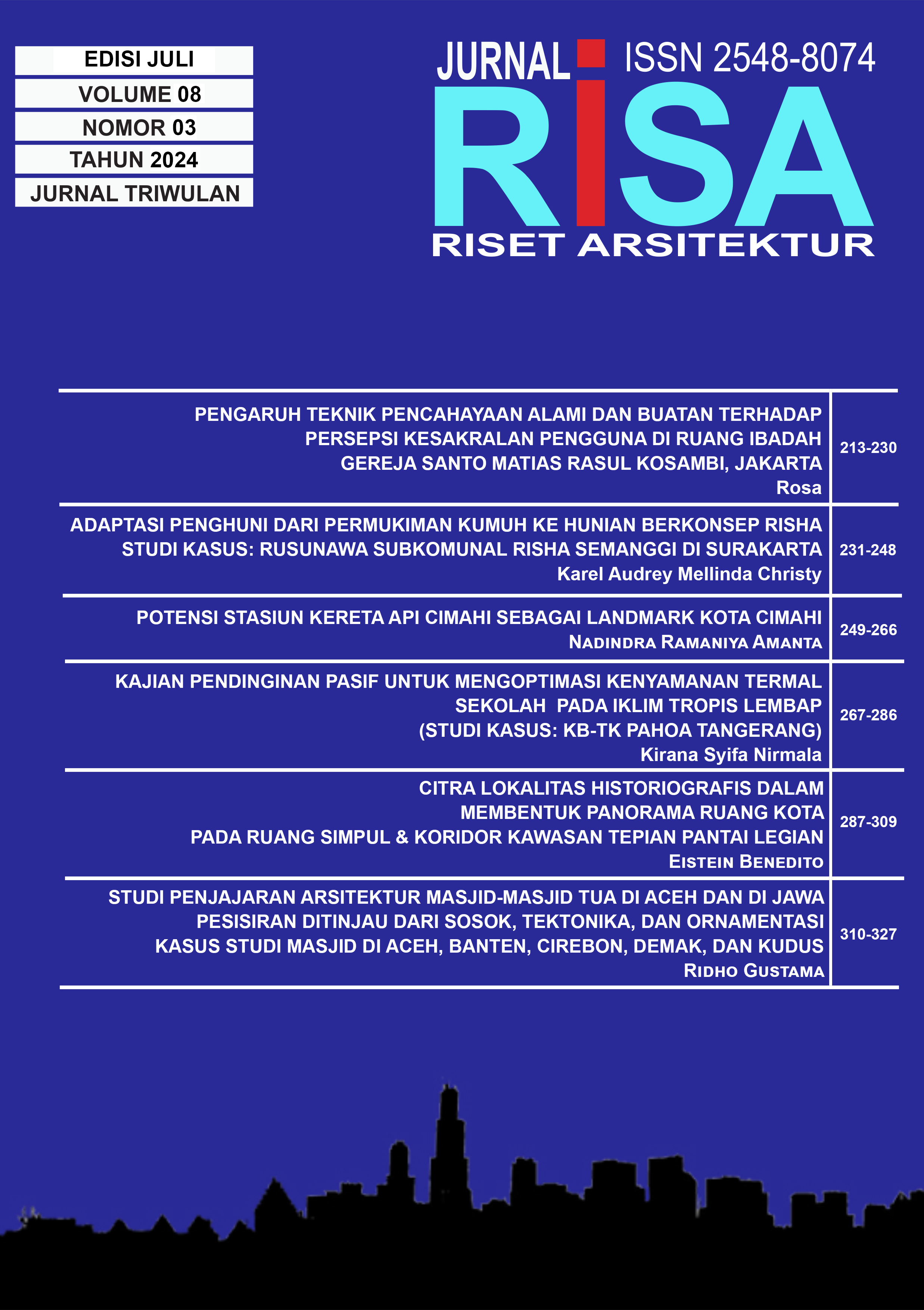THE HISTORIOGRAPHIC LOCALITY IMAGE IN FORMING PANORAMIC TOWNSCAPE IN THE NODE & CORRIDOR OF LEGIAN BEACHFRONT AREA
DOI:
https://doi.org/10.26593/risa.v8i03.8243.287-309Abstract
Abstract - City in the context of architecture is defined as a physical-spatial entity, a manifestation of human and its interaction with geographical and historiographic context, resulting in unique characters of every context. Townscape aesthetics is subjective remembering the diverse in sense of position, sequence of view, and observer’s psycho-cultural aspects. Nusantara architecture aesthetics could be defined visually through Wastu and Citra.
This study aims to identify the anatomical elements of townscape that provide an aesthetic indication of visual and locality image from street perspective. Descriptive method with a qualitative approach is used by describing factual conditions from virtual observations of Legian Coastal Area and compare them with theories from urban aesthetics literature. The related data is then analyzed using a semantic assessment method.
The result shows permanent building, natural vegetation, and road holds a significant impact on the harmony value of visual image. Monument, heritage building, patterns, and human activity found indicates locality value. Further, there is a relevant connection between level of locality and visual harmony, mainly due to local architecture is generally based on philosophy of harmonious balance and is expressed in visual order. This research is useful as the foundation for similar research and as a basis for further city developments.
Keywords: townscape aesthetic, locality historiographic, visual image, Legian
Additional Files
Published
Issue
Section
License
Copyright (c) 2024 Eistein Benedito

This work is licensed under a Creative Commons Attribution-NonCommercial-ShareAlike 4.0 International License.












